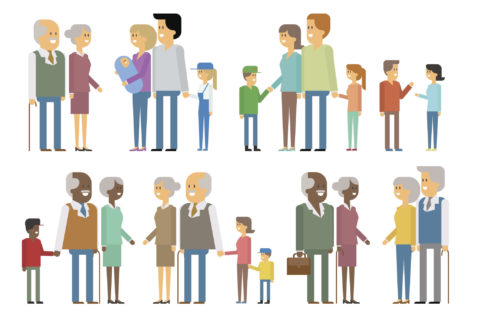By Neda Eneva
How can we ensure our industry and profession keep up with the demands of our time and remain relevant not only in generating insights for our clients, but also in effectively impacting the lives of consumers? Last week Amsterdam hosted the latest edition of the ESOMAR Best of series, bringing Congress presentations to the local data, insights and research audience in The Netherlands. And while there wasn’t an official theme umbrella accompanying the event, there was a clear underlying message – if we wish to stay relevant we need to be able to look beyond the conventional and be brave to experiment.
The event opened with a presentation by Till Winkler from SKOPOS, Germany with an inspiring talk on the need for agile research. Are we truly in sync with the way our clients work? Drawing from his experience in the sphere of UX research, Till showcased interesting parallels between the 4 step feedback loop UX teams work with and fundamentally some of the current core requirements in working with clients not only in UX research, but also beyond. He observed that in the sphere of UX and probably most of the tech-oriented industries, the initiation of change and the generation of fact-driven decision-making have actually shifted towards the UX and tech teams themselves leading to a dynamic change in the way clients overall operate. It is the UX teams that drive the change, Till argued, and as drivers of change how do they operate? In a very agile manner, for example, adopting the popular Eric Ries’ 4 step feedback loop, which places the generation of ideas and their execution prior to measuring and generating insights. Research takes too long and it is too complex, UX experts argue and so there appears to be a gap between the model of “build, test and build again” they execute and the insights-first weighty cycles the market research industry provides. And while the clients have an increased demand for speed and continuous support, as well as high demands for specific expertise because they have fundamentally changed the way they work, is the market research industry adapting itself to their needs? Can we prove them wrong in saying that #mrx is just not worth the time and effort? To answer that, we do not even need to reinvent the wheel, Till argued, instead we could perhaps learn from the way our clients operate. To achieve that, he suggested four key action points. First, utilize technology and more specifically – achieve automation. Make use of new solutions to make your processes faster, easier and even cheaper, which can go as far as change the way you interact with clients to meet their needs. Number two, take control, ‘stop the waterfall’. Have the nerve to pivot and try something new, do not be afraid to adjust along the way. Try and experiment with new tools, such as communities for example, to achieve responsive and adaptive testing and insights’ generation. And third, rethink. And this, Till argued is a key principle in achieving a more agile way of working. What about our own UX? Have WE ensured fluid user experience and full, cross-platform integration or have we forgotten that methodology, while crucial, is only one aspect of the journey of meeting clients’ needs. Agile thinking is not something that we can or should switch on and off, it has to become a core principle in the way we work. And so Till concluded, maybe we do not need to prove UX-ers wrong, bur rather try and think differently and most of all, be brave to experiment, try something new, ask for feedback and adapt going ahead.
Going beyond working with clients and moving on to consumers, the need for adaptive action was also highlighted by the team at SKIM, and more specifically Julia Goernandt, Nijat Mammadbayli and Patricia Domiguez who presented their case-study on millennials as key brand development disruptors. And while many still fail to see the relevance, the SKIM team highlighted in a clear way the importance of this key demographic among consumers. In the US, for example, the team highlighted, there are more millennials than baby boomers and while millennials are transforming the market, brands still fail to rethink how they communicate to this generation effectively. To showcase that, a modified research method is needed in understanding millennials and the way they are adopting new technologies and are adapting consumer behavior to their own models. Julia, Nijat and Patricia presented their global case study showcasing a new research approach and namely conducting a survey on smartphones, and more importantly, asking millennials to respond in a way which comes naturally to millennials. Focusing on the telecom industry, the research addressed what millennials look for when choosing a network provider, the best way to talk to millennials, and ultimately what influences their likelihood to switch or stay with a provider. They adapted the swiping technique using ‘unspoken’ technology, which takes into account both the emotional and rational element in decision-making. The research was conducted across 3 different locations (Atlanta, London and Rotterdam) and across a 24/7 timeframe. And so, the case study paid off as they discovered interesting findings confirming key behavioral features of millennials as consumers. Millennials wish to be connected at all time, thrive to be themselves while having fun, value disruptors and are highly perceptive to visuals. And what does that mean for brands? When addressing millennials, it is important not to forget that they are open to changes in decision-making, value the basics and can be rather volatile. And while this global case study focused and highlighted this one key consumer demographic, it showcased an even more important issue – market research needs to maintain an adaptive approach when addressing different consumer groups and thus needs to adjust its methodology in generating insights accordingly.
The third speaker of the day, Nikki Lavoie, MindSpark Research International, continued the topic of connecting better with our target audiences. Where do we look for answers, she asked. Typically, market researchers adjust their methodologies through new tech or more data, but Nikki offered an exciting and rather revolutionary method – why not draw inspiration through a more cross-disciplinary method? She proposed the use of empathy, namely not only understanding and but also sharing the feelings of other people as a tool to gather insight that we understand and value. Market researchers, Nikki argued, both across the qual and quant, often don’t think twice about how they engage to get them into a focus group, for example. Are we motivating participants the best way possible and even more importantly, do we realize how detached from their experiences we are as researchers and how that potentially affects the insights and conclusions we generate from them. Nikki challenged the maxima of “if ain’t broke, don’t fix it”, urging market researchers to stop resting on their laurels, suggesting the need to go back to the foundations and shift the focus back to the recruitment process. She contested common motivation techniques, such as financial rewards, arguing that those always offer lower engagement rates and cause additional post factum issues. Using learnings from gamification theory, psychology and behavioral economics, Nikki underlined that understanding and connecting with human motivation is a lot more crucial than researchers often realize and there are a lot of limitations that can be found in un-empathetic techniques such as financial incentives. Trust, Nikki added, is another factor often getting lost in financial incentives. The moment you pay someone to answer a personal question, the relationship changes to an economic one, Nikki explained. To illustrate this, she presented a case study she conducted with a control group and a volunteer group who received different explanations as to why they were invited to participate. With the results showing that the completion rate of the task suggested was higher among the volunteer group, Nikki underlined that our ability to motivate and engage with consumers is limited at present. Are we ready to understand and share their experiences, she asked, to reach true understanding of both their shopping and participation behavior?
The final presentation by Anouar El Haji from Veylinx also focused on drawing inspiration from different fields and going beyond traditional methodologies to measure product value and perceptions. His argument was that we need to make the game as real as possible if we are to expect real insights. It is time for #mrx to go in the direction of introducing ‘skin in the game’ for true measurement of value. The problem with surveys, he argued, is that their hypothetical bias is a result of their fictitious nature. His answer to this – “Ask people to put their money where their mouth is” or, simply put, auctions. At Veylinx they have adopted a form of the Lonely but Lovely Vickrey Auction thus impacting the value by changing the positioning of the product. They set up a product valuation by setting an auction in which each participant has one anonymous vote, with the final price being the highest losing bid. By auctions, Anouar argued, the people that are willing to actually pay for a product are more clearly distinguished from the people that are not. A compelling approach, which certainly answers the call for unconventional approaches to commonly witnessed industry challenges.
And so, from auctions to empathy, from millennials to the need for being more agile, this edition of ESOMAR’s Best Of certainly didn’t disappoint in offering inspiration to the call for change from conventional research workflows. Biggest learning for me? Do not be afraid to experiment and look beyond your field when trying to push the boundaries for better insights.
P.S Did I mention that all the speakers are millennials themselves? How cool is that?!?
Neda Eneva is Marketing and Communications Manager at ESOMAR.



1 comment
Great! There is a market research agency Dubai named Premier Marketing Management. They are experts in market research, retail audit service, benchmarking, etc.